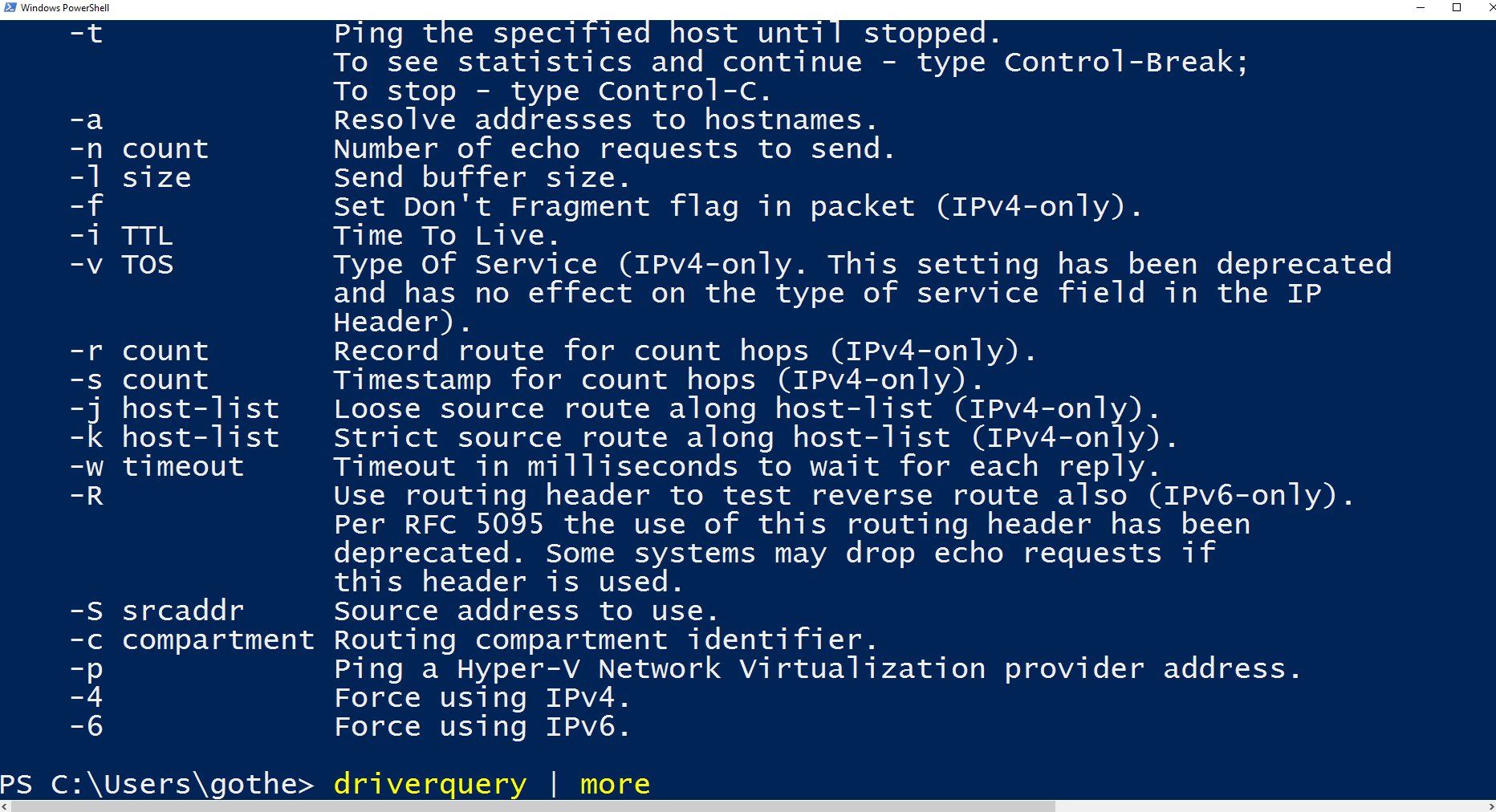

- Powershell cmd c examples archive#
- Powershell cmd c examples zip#
- Powershell cmd c examples windows#
In that case, you need to enable the Script execution by setting an execution policy. When you use a third-party tool or call this command remotely, a local computer might block the script execution. You can also use the below command, C:\> PowerShell.exe Invoke-Command -ScriptBlock

VERBOSE: Performing the operation "Copy File" on target "Item: C:\Temp\EnvVariable.txtĭestination: C:\Temp\Test\EnvVariable.txt". VERBOSE: Performing the operation "Start-Service" on target "Print Spooler (Spooler)". Output C:\>PowerShell.exe -command "C:\temp\TestPS.ps1" Here we are providing the path of the script. The above command is similar to running individual PowerShell commands. C:\> PowerShell.exe -command "C:\temp\TestPS.ps1" We need to call this script using the command prompt. Exampleįor example, we have a script TestPS.ps1 which first starts the spooler service and then copies a file to a different location. Change \* to \prefix* or \*.txt to limit files), compression level 9, password, encrypt filenames, Send output to host so it can be logged.To run the PowerShell script from the command prompt, we can use the below command.
Powershell cmd c examples archive#
#7z options: add, type 7z, Archive filename, Files to add (with wildcard.
Powershell cmd c examples zip#
$strFile = ::Format(".7z", "c:\",$FolderName,$TimeStamp) #Create filename for the zip $TimeStamp = ::Now.ToString("yyyy-MM-dd_HHmm") #Create unique timestamp string $FolderName = $FolderPath.Substring($FolderPath.LastIndexOf("\")+1) #grab the name of the backup folder $FolderPath = "C:\Backup" #Folder to backup (no trailing slash!) Here is an example of calling 7Zip with multiple parameters taken from a 7-Zip to Amazon S3 Powershell Script that I wrote: $7ZipPath = "C:\Program Files\7-Zip\7z.exe" #Path to 7Zip executable Also if you want the console output to be included in a powershell transcript you will need to pipe the output to out-host. Convenient to read on the go, and to keep by your desk as an ever-present companion.
Powershell cmd c examples windows#
$what = have found that the best way to execute a native command is to use the & command to execute a list of strings. In older Bamboo versions using PATH in the Environment Variables field (of a Script task) doesnt set the windows PATH variable, whereas using Path sets Path and PATH in cmd shell.Shell Scripting Tutorial is this tutorial, in 88-page Paperback and eBook formats. There are a few ways to do this right but the following snippet is based on the way you seem to want to break out your parameters and does work for the single directory example I've used. You do want the entire Source string to be treated as one param (including spaces that may be in there), likewise for Destination but your $what and $options will fail because they will both be delivered to Robocopy as a single parameter which cannot be parsed. In your example you are sending the entire string as the first parameter and Robocopy is telling you that it can't find that long string as a source directory. Populating strings into parameters for external commands from within Powershell requires some hoop jumping if you want to be able to use variable expansion and also have the resulting command line properly understand which parameters you want to be separated and which should not. **** /MIR can DELETE files as well as copy them ! MIR :: Mirror a complete directory tree.įor more usage information run ROBOCOPY /? Source :: Source Directory (drive:\path or \\server\share\path).ĭestination :: Destination Dir (drive:\path or \\server\share\path). Simple Usage :: ROBOCOPY source destination /MIR Source : P:\ C:\Backup\Photos \COPYALL \B \SEC\ \MIR \R:0 \W:0 \NFL \NDL \LOG:MyLogfile.txt\ĮRROR : No Destination Directory Specified. When I run the script I get these errors:. The script takes in a csv file with a list of source and destination directories. Robocopy "$source $dest $what $options /LOG:MyLogfile.txt" I'm trying to use robocopy inside powershell to mirror some directories on my home machines.


 0 kommentar(er)
0 kommentar(er)
